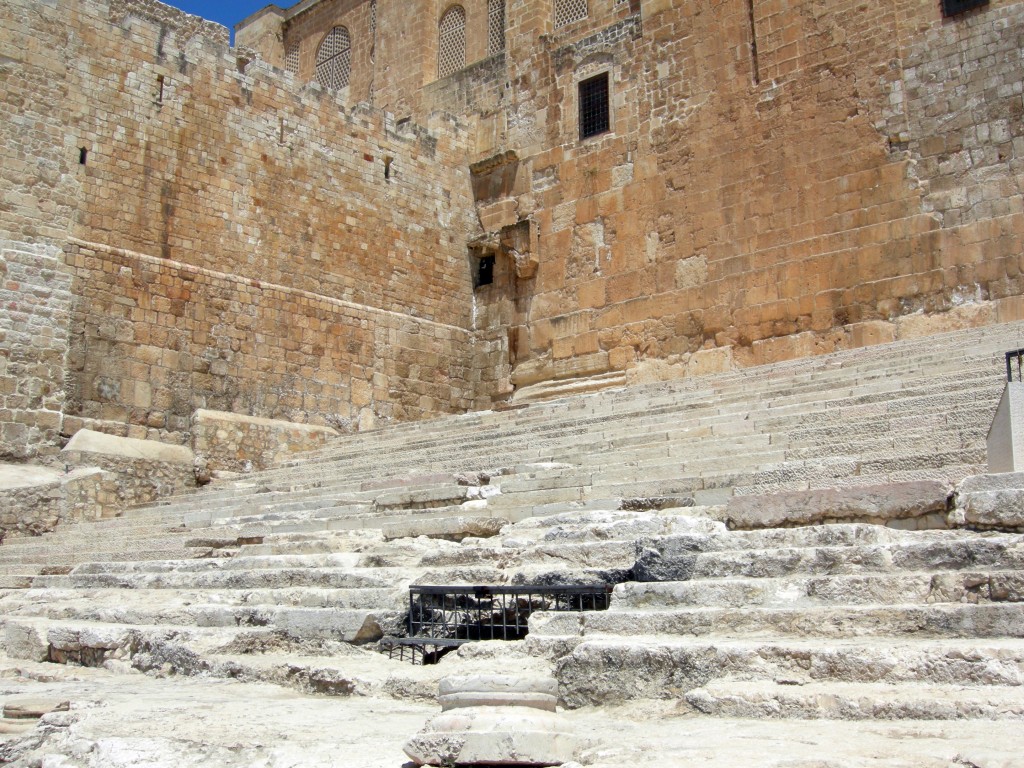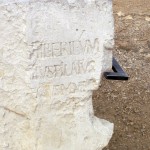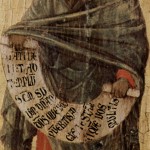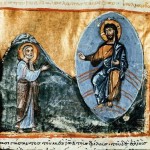
1 Samuel 1:4-20 and/or Daniel 12:1-3
What It’s About: These are both texts about promises, one specific and one general. The 1 Samuel text is about a woman who cannot bear children, and who prays to God (so fervently that others think she is drunk) for a child. Her name was Hannah. The Daniel text is a promise of the raising of the dead, under a future regime still to come, and a promise that “the wise shall shine like the brightness of the sky.”
What It’s Really About: Only one week–Reign of Christ (or Christ the King) Sunday–lies between this week and the new year of the church, Advent. So these texts are really kind of Advent texts, snuck in early. The Hannah text is one of many in the bible that feature women who desire children but cannot have them, and her fervent desire to become pregnant is a kind of stand-in for the longing of the world for a savior. Her son, Samuel, is a kind of type of Jesus, set apart for holiness and promised for greatness.
The Daniel text, meanwhile, prepares us for Advent (which is itself a kind of preparation) by stoking the expectations that the world will change in a dramatic way. Things will not always be as they are, Daniel is saying, and there waits a new order where even death is overcome. Daniel, of course, did not have in mind someone like Jesus, but Christians through the centuries have read texts like this one as referring to an immanent arrival of a change in the very fabric of the cosmos.
What It’s Not About: Advent is a good time to remember that time only moves in one direction. Christians read this text, and the many prophetic texts that are to come in the season ahead, as referring to Jesus. That’s an interpretation that’s only possible in hindsight, though. Daniel’s first readers and hearers wouldn’t have conjured anything like Jesus in their minds when they encountered this text. It would not have been at all obvious that anything like Jesus was a natural end of this kind of text.
It’s important, even as we read books like Isaiah as pointing the way to Jesus, to remember that these are texts with their own histories, audiences, themes, and imagined worlds. They are not simply stepping stones to Christianity, but they stand in their own right, as emblems of their own traditions and their own times and places. They do not require a Jesus to be complete, and they do not need a New Testament to be “fulfilled.” They are fulfilled in the hearing of generations of Jews, and, yes, we can claim, Christians. They stand on their own.
Maybe You Should Think About: Stories about “barren” women can be very painful for a lot of people, especially, obviously, women. While the narrative arc of “barren woman who is faithful enough to be given a child” is a common one in the bible, it is not a story that is universal. Some women cannot bear children, despite all the efforts of science. Some women do not want to bear children. Some women don’t see motherhood as desirable, no matter how much the bible thinks that is the ultimate marker of womanhood. Some women lose children. One of the side effects of having had children of my own is that I have become keenly aware of just how many people have deep pain around this part of life, and how much woundedness and hurt there is. We should be careful any time we recite, as timeless truth, the story of a woman whose worth relies on her fertility, and whose faithfulness was rewarded with a son, which is the greatest reward of all. Not many of us would call those claims true in the abstract, but we forget that when we encounter a story like the one of Hannah. We should remember…especially those of us (men) who cannot know that of which we speak.
What It’s About: This passage is loaded with significance. It’s getting to the point that, when I look at the lectionary and see still more Hebrews after weeks and weeks of Hebrews, I am starting to long for something different. But this passage has a lot going on. It’s more comparison of Jesus to a high priest, which we’ve seen for a few weeks now. But it’s more than that–it’s a kind of proto-soteriology, an early attempt at explaining salvation. Jesus’ blood (and flesh, and forgiveness, and victory) means that we can “enter the sanctuary” because we have been “sprinkled clean” and “washed.” These are all ideas deeply rooted in the experiences of the Jerusalem temple, which–it bears repeating–was in ruins by the time this document was written.
But I think my favorite part is down at the end, where in verses 24 and 25 the story slips into ecclesiology–how we should be as a community and as a church. We are to “provoke one another to love and to good deeds,” and more than that, to meet together. The last bit–“as you see the Day approaching”–is intriguing. Is the “Day” (which is capitalized in the NRSV, but not in the Greek, obviously) an eschatological, end-of-days-Day? Or is this a reference to dawn, when early Christians met together to sing hymns and pray? I tend toward the latter, but the capitalization tells me that the NRSV translators probably thought the former. Either way, it tells us something interesting about the early church.
What It’s Really About: Why should we be church? Because Jesus has made it possible. It is remarkable that, at the end of this lengthy discourse on Jesus as high priest, the payoff is that we should be good church. Think about that. It’s not individual (“therefore you are holy and saved, so don’t sweat it). It’s communal. Meet together. Make each other love and do good things. This is salvation-as-ecclesiology. This is church as the fruits of Jesus’ passion. It’s remarkable.
What It’s Not About: It’s not quite about church, though. These people are far from the Jerusalem temple, which is itself a thing of the past, and yet the temple is still the dominant metaphor for access to God. This is an early kind of Christianity, and one that did not persist for long. This was a Christianity that had not yet passed through the disruption of Marcion (and his anti-Judaism) or the “partition” of Judaism and Christianity. The church, here, is another way of thinking about the temple, where God is accessed, and where community can flourish.
Maybe You Should Think About: What does church look like in this passage? And what do we have to learn from it?
What It’s About: This is the first part of “Mark’s little apocalypse,” the strange 13th chapter of Mark where Jesus suddenly slips into a discourse about the destruction of the temple and a new order of things.
What It’s Really About: This is not really an “apocalypse” in the sense that Daniel or Revelation is an apocalypse. It doesn’t share all (or even most) of the characteristics of the literary genre. But it does share some, that those are enough to make it count for many people. Jesus here is predicting the future, and he is predicting the advent of a new kind of world in the overturning of old institutions like the temple. The word for “apocalypse” in Greek means “revelation” or “unveiling,” and Jesus here is warning his followers to be aware and watchful for the signs that will accompany the changing of things.
What It’s Not About: Jesus is predicting the destruction of the Jerusalem temple (which actually occurred a generation later, at the hands of the Romans), but this saying also gets wrapped up in predictions about his own death and resurrection. So it’s hard to know quite what to think of this. It does seem clear that this was the kind of statement that got him into some trouble (see Mark 14:58 and 15:29), so even in Jesus’ own life this statement was probably seen as strange and confusing. Is this a saying about his own life? About the temple? Was it strengthened or invented after his death? (I tend to think not, given its confusing nature in the text).
Maybe You Should Think About: I am actually preaching on this text, and I am taking the opportunity to preach about the Black Lives Matter movement. My congregation is mostly white, middle-class, and liberal. But some of them feel threatened or confused by the Black Lives Matter movement, and so I’m preaching a sermon that I’m calling “Little Apocalypses,” a play on the scholarly way of talking about Mark 13. I’m going to point out that the Black Lives Matter movement feels to some like the temple coming down–a dismantling of a system that they’ve come to rely on and trust. It’s an apocalypse in that sense. But it’s also an apocalypse in the other sense–an unveiling and a revealing of something that has remained hidden (willfully or not) until now: the plagues of racism and white supremacy. Even in my liberal congregation, there is a lot of anxiety about this kind of change, and a lack of awareness of the ways we white folks are in need of a revelation about the true state of things. The feelings of fear and anxiety are the birth pangs, as Jesus puts it, of something new. And it’s not something we should fear, but embrace, as the breaking-in of God’s truth and justice into our world.











